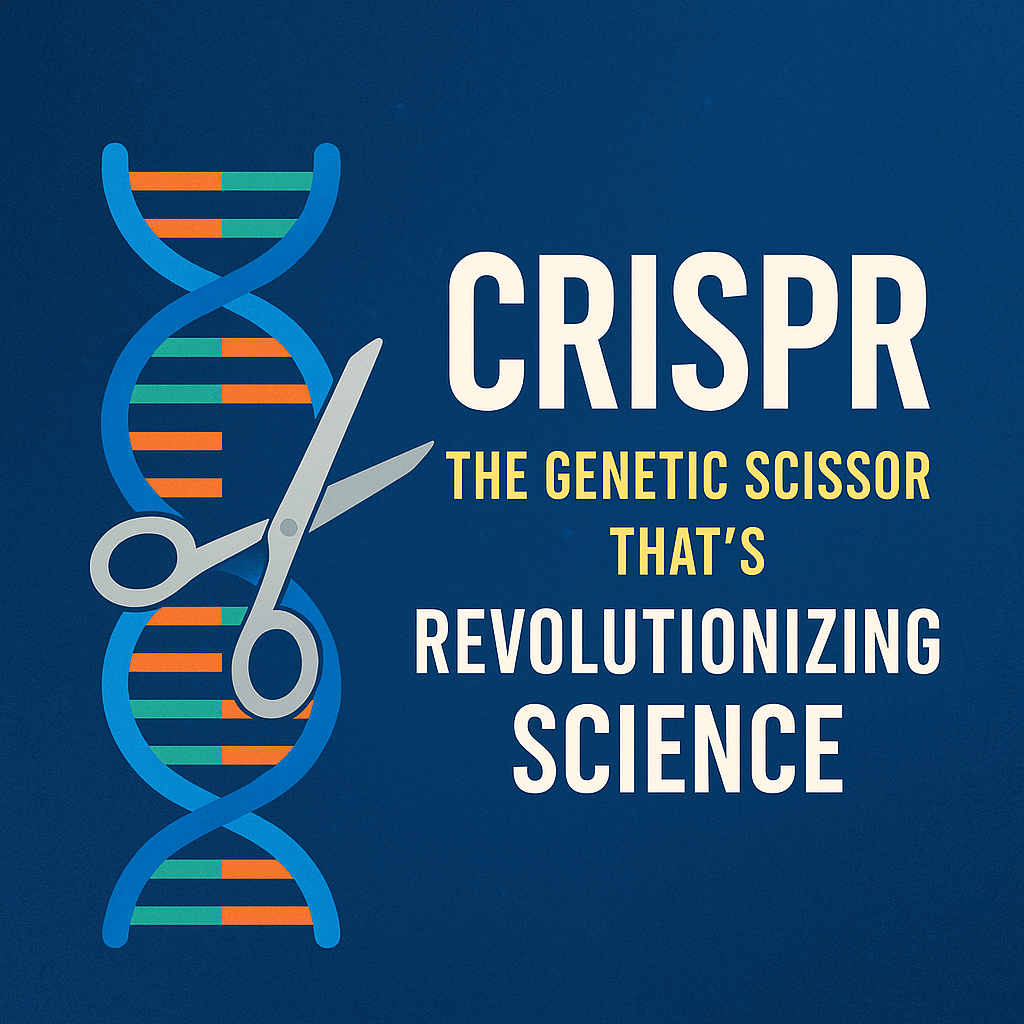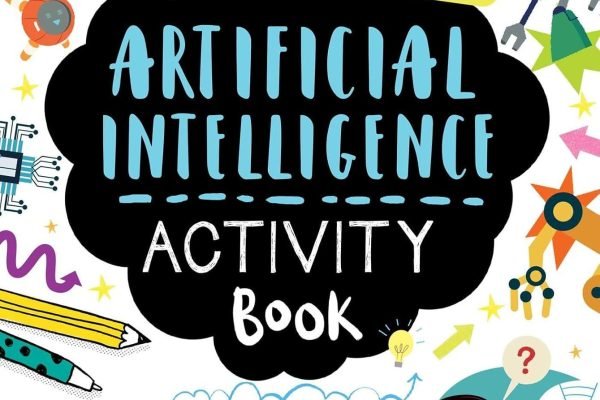Introduction
Imagine being able to edit genes like you edit text in Word — cutting, copying, and pasting. That’s exactly what CRISPR lets scientists do. CRISPR is one of the most exciting scientific breakthroughs of the 21st century. It’s changing the way we treat diseases, grow crops, and even think about the future of evolution. But how does it work? And why is everyone calling it the “genetic scissor”? Let’s break it down.
What is CRISPR?
CRISPR stands for:
Clustered Regularly Interspaced Short Palindromic Repeats
It’s a part of DNA found in bacteria, originally used by them as an immune system to fight viruses.
Scientists discovered that this system could be repurposed to cut and edit genes in any organism — plants, animals, even humans.
The key tool here is a protein called Cas9, which acts like molecular scissors.
How Does CRISPR Work? (In Simple Steps)
- Find the gene to be edited – like finding a sentence in a book.
- Guide RNA (gRNA) is designed to match that specific gene.
- Cas9 enzyme is attached to the gRNA.
- The Cas9-gRNA complex moves through the DNA and finds the target.
- Cas9 cuts the DNA at that point.
- The cell repairs the cut — during which scientists add, delete, or replace a gene.
Think of it like using “Find & Replace” in a Word doc — but for genes.
Why CRISPR is a Game-Changer
- Precision: Unlike older methods, CRISPR is highly targeted.
- Speed: Edits can be made quickly and efficiently.
- Cost-effective: Much cheaper than past genetic tools.
- Versatility: Works in plants, animals, humans — across the board.
Real-Life Applications of CRISPR
1. Medicine
- Cure for genetic diseases like sickle cell anemia and muscular dystrophy
- Research on cancer treatment using immune cell editing
- Trials underway for blindness, HIV, and heart diseases
2. Agriculture
- Disease-resistant crops (no need for pesticides)
- Drought-resistant rice or wheat
- Faster-growing livestock
3. Diagnostics
- Used in rapid COVID-19 tests (faster than PCR)
- Detects viruses or bacteria from genetic material directly
4. Biodiversity & Environment
- Eradicating invasive species or mosquitoes carrying malaria
- Reviving extinct species (de-extinction efforts like the woolly mammoth)
Ethical Concerns
CRISPR has also raised important moral questions:
- Should we edit human embryos?
- What if gene editing is used for designer babies?
- Can we accidentally cause harm by editing the wrong gene?
In 2018, Chinese scientist He Jiankui shocked the world by creating the first gene-edited babies — raising alarm bells in the global scientific community.
That’s why most countries have strict regulations, especially around human trials.
The Future of CRISPR
- CRISPR 2.0 (Base Editing): Allows for more precise “letter-by-letter” edits.
- Prime Editing: A “search-and-replace” function for DNA.
- Gene Drives: A method to spread traits through entire populations — with both potential and risks.
Recognition & Nobel Prize
In 2020, Jennifer Doudna and Emmanuelle Charpentier received the Nobel Prize in Chemistry for their work on CRISPR-Cas9 — a historic moment for women in science and for biotechnology.
Key Terms to Remember
| Term | Meaning |
|---|---|
| CRISPR | DNA sequences used to edit genes |
| Cas9 | Protein that cuts DNA |
| gRNA | Guide RNA that finds the gene |
| Gene editing | Changing specific parts of DNA |
Learn More
- [Video: How CRISPR Works (YouTube Embed)](YouTube placeholder)
- Download: 📄 CRISPR Notes for UPSC GS Paper 3
- Take the Quiz: How well do you understand CRISPR?
🧬 CRISPR Quiz
Final Thoughts
CRISPR isn’t just a buzzword — it’s a powerful tool that could cure diseases, fight climate change, and reshape agriculture. But it also brings challenges, especially ethical ones, that we must face carefully.
Curious minds should follow CRISPR closely — it’s rewriting the story of life itself.
UPSC Mains Question on CRISPR
Q. Discuss the potential of CRISPR-Cas9 gene-editing technology in addressing genetic disorders and improving agricultural practices in India. What are the ethical and regulatory challenges associated with its application?
(Answer in 250 words)
Was this helpful?
📥 Subscribe to get weekly explainers like this
💬 Have a question? Drop it in the comments below
🔗 Share this with someone who loves science!








